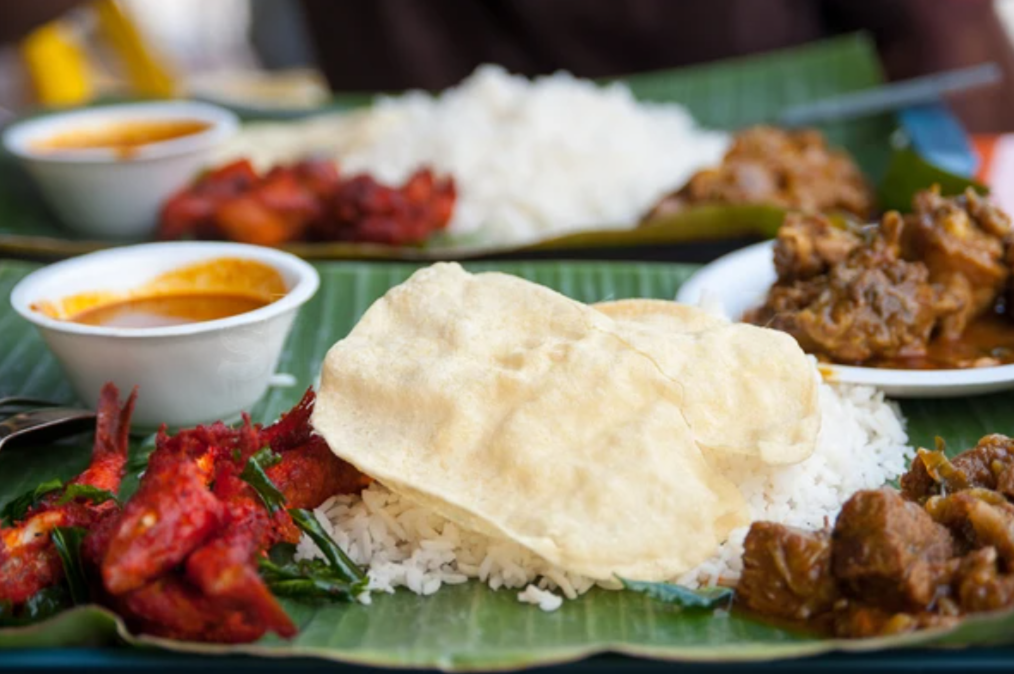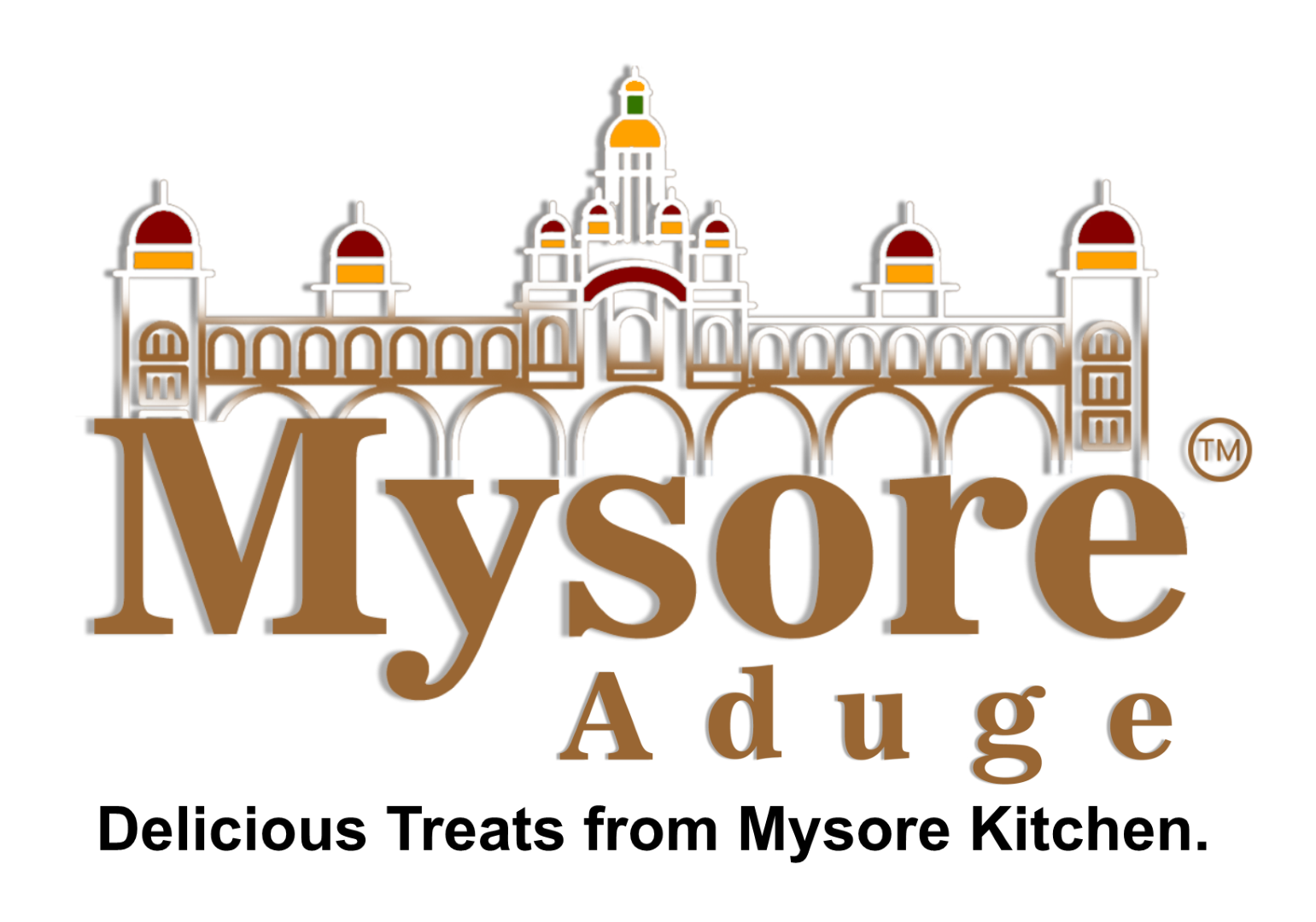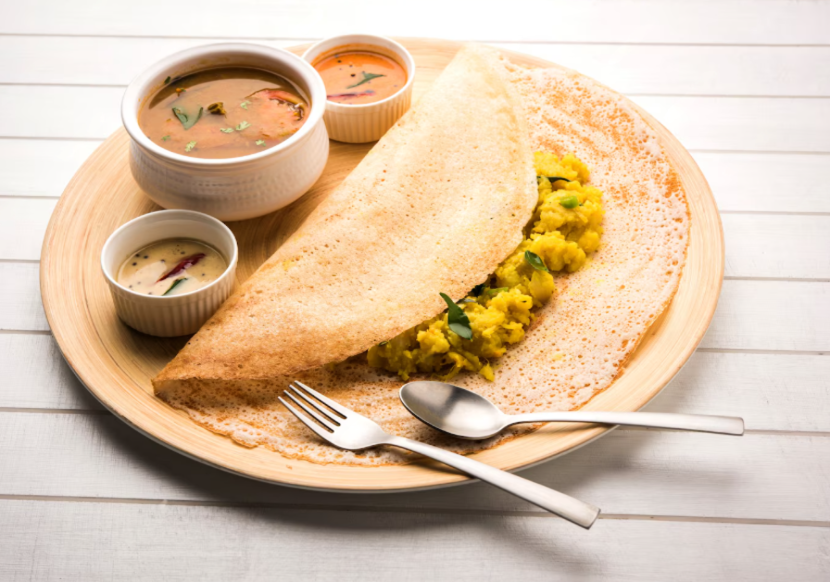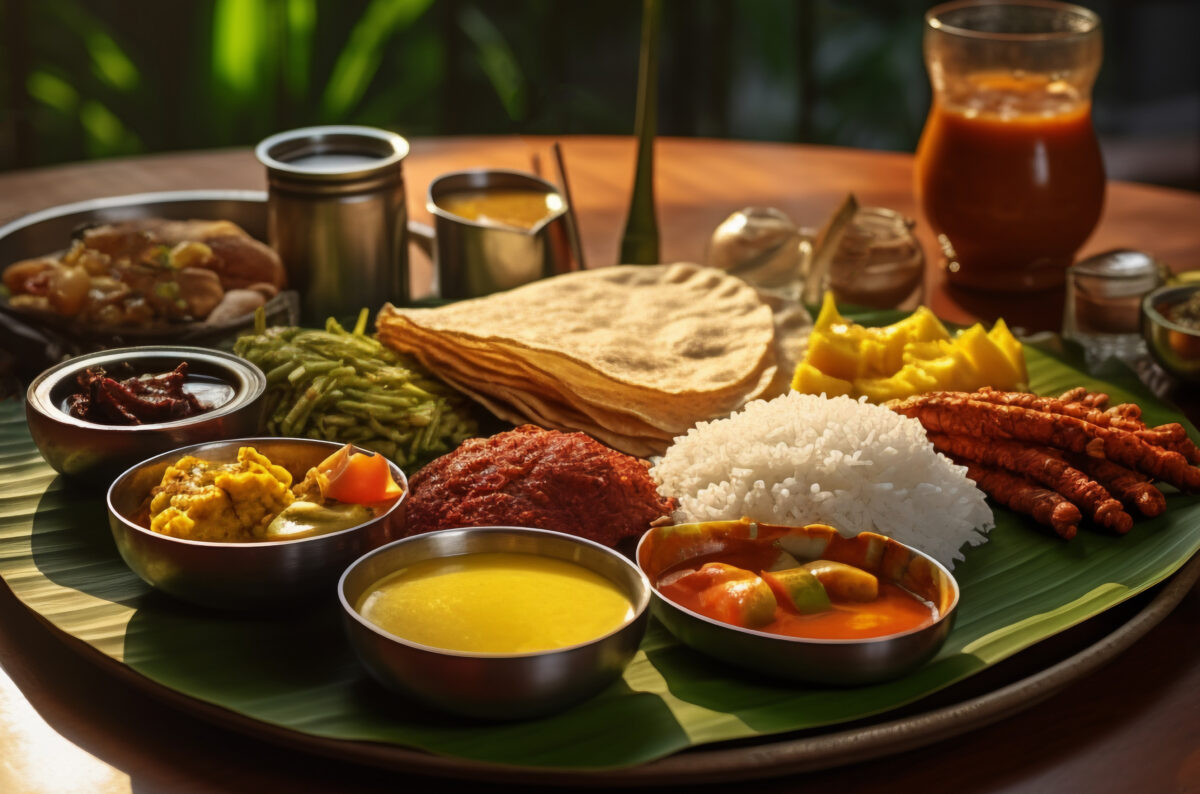
- October 7, 2025
South Indian Franchise Investment Cost in 2025: Discover Profitable Brands Like Mysore Aduge
The South Indian food industry in India has witnessed a massive transformation over the past few years. With the growing demand for authentic, vegetarian, and health-conscious cuisine, investing in a South Indian food franchise has become one of the most lucrative opportunities for entrepreneurs. Understanding the South Indian franchise investment cost is the first step toward entering this profitable and culturally rich business segment.
Why South Indian Food Franchises Are Booming
India’s quick-service restaurant (QSR) market is expected to touch ₹22,000 crore by 2030, with South Indian cuisine contributing a significant portion of that growth. The simplicity, affordability, and popularity of dishes such as dosa, idli, vada, and filter coffee have made South Indian food outlets a common sight in both metro cities and tier-2 towns.
Modern consumers are leaning toward authentic and vegetarian food options, making South Indian franchises an appealing choice. The business combines high customer retention, quick service models, and affordable raw material costs—key factors that attract first-time entrepreneurs.
Understanding South Indian Franchise Investment Cost
Before starting a franchise, it’s essential to understand what contributes to the total investment. The South Indian franchise investment cost typically includes:
- Franchise Fee: A one-time payment to secure the brand license.
- Setup and Interiors: Cost of designing and furnishing the outlet according to brand guidelines.
- Kitchen Equipment: Purchase of commercial stoves, tawa, grinders, and storage units.
- Initial Stock and Manpower: The first batch of supplies and training costs.
- Marketing and Launch: Local marketing campaigns and promotional material.
Average Investment Cost Breakdown for 2025
Franchise Brand | Investment Range (₹) | Area Required | Model | ROI / Payback Period |
Mysore Aduge | ₹18–25 lakh | 400–600 sq. ft. | FOFO | 18–24 months |
Dosa Ratnam | ₹12–20 lakh | 200–400 sq. ft. | Kiosk / Dine-In | 14–18 months |
Adigas | ₹25–35 lakh | 400+ sq. ft. | FOCO | 20–24 months |
Sankalp | ₹50 lakh+ | 1000+ sq. ft. | Full Dine-In | 30–36 months |
The cost varies depending on location, brand reputation, and the type of franchise model. Investors should carefully evaluate the return on investment (ROI) along with brand support before committing.
Factors Influencing South Indian Franchise Investment Cost
- Brand Reputation: Established brands like Sankalp or Adigas may demand higher investment but often deliver stronger brand recognition and consistent customer traffic.
- Franchise Model: The cost of a kiosk or express counter is lower than that of a full-fledged dine-in outlet.
- Location: Rent and operating costs in metro cities are higher than in tier-2 or tier-3 cities.
- Menu Diversity: Multi-cuisine menus increase setup and equipment costs compared to pure South Indian outlets.
- Operational Support: Brands that provide comprehensive training and marketing support can reduce early-stage challenges.
Spotlight: Mysore Aduge – A Franchise Blending Heritage with Profit
Founded in 2021, Mysore Aduge stands out as one of the most authentic South Indian restaurant franchises in India. The brand celebrates the culinary traditions of Mysore by offering a purely vegetarian and Sattvik menu that reflects India’s cultural and spiritual heritage.
Mysore Aduge’s franchise model is designed to support first-time entrepreneurs. Its affordable investment range of ₹18–25 lakh includes operational guidance, training, and marketing assistance. The brand provides:
- Site selection support to identify high-traffic locations.
- Comprehensive staff training to maintain food quality and service standards.
- Branding and marketing support for consistent visibility.
- Turnkey setup solutions for quick and efficient launch.
With a menu that features classics like Mysore Masala Dosa, Bisi Bele Bath, and Puliyogare, Mysore Aduge appeals to a wide customer base while keeping costs low. It is an ideal choice for entrepreneurs seeking a low-cost South Indian franchise with high returns.
Why South Indian Franchises Offer Excellent ROI
The return on investment (ROI) is one of the most crucial factors for any entrepreneur evaluating a food business opportunity. In the case of South Indian food franchises, the ROI is notably higher compared to many other cuisines and QSR models. This advantage is driven by a unique mix of operational efficiency, low ingredient costs, consistent demand, and cultural familiarity.
Below is a detailed look at the key reasons why South Indian franchises consistently deliver strong ROI and long-term sustainability.
1. Cost-Effective Operations
South Indian cuisine is built on ingredients that are affordable, easily available, and non-perishable compared to other food formats. Staples like rice, lentils, spices, and pulses are cost-efficient and widely sourced from local suppliers.
This allows franchise owners to maintain low food costs (COGS typically under 30%) while still offering high-quality dishes. Unlike Western or fast-food franchises, South Indian outlets don’t depend on expensive imported ingredients or elaborate kitchen setups.
Additionally, many dishes—such as dosa, idli, or vada—share similar core ingredients, which reduces inventory complexity and wastage. The simplified kitchen workflow also translates to lower staffing requirements and reduced operational overhead.
2. All-Day Dining Model
One of the strongest business advantages of South Indian food outlets is their multi-meal adaptability. Dishes like dosa, idli, and upma are not confined to breakfast alone; they are enjoyed across all meal times — breakfast, lunch, snacks, and dinner.
This creates steady footfall throughout the day, unlike other restaurant formats that peak only during specific hours. With the right location and marketing, a South Indian franchise can generate continuous revenue and higher daily sales volumes.
Moreover, the variety of light, wholesome, and quick-to-prepare dishes ensures faster table turnover and shorter service times — two critical factors that enhance profitability in the QSR segment.
3. Affordable and Inclusive Pricing
South Indian food naturally appeals to a wide consumer base due to its affordability. The pricing is accessible to college students, working professionals, and families alike. For instance, a full meal at a South Indian outlet often costs between ₹100–₹250, making it a popular daily dining option.
This affordability drives high customer retention and repeat business, both essential to maintaining stable cash flow. Since the target audience is large and diverse, South Indian franchises perform well across urban metros, mid-sized towns, and even smaller cities.
4. High Customer Loyalty and Cultural Familiarity
South Indian cuisine enjoys a universal appeal across India. Dishes like dosa and idli are considered comfort foods for millions. This familiarity translates into instant brand acceptance for franchisees — customers don’t need to be “educated” about the menu.
Franchises like Mysore Aduge, Dosa Ratnam, and Adigas leverage this deep-rooted cultural connection by emphasizing authentic flavors and traditional preparation methods. This authenticity fosters emotional loyalty among customers, encouraging repeat visits and word-of-mouth marketing — both of which are crucial for sustainable profitability.
5. Low Raw Material Fluctuation and Stable Margins
Unlike non-vegetarian or imported cuisines, South Indian food is less affected by raw material price fluctuations. Since the menu relies primarily on vegetarian ingredients such as rice, pulses, and vegetables, the cost of goods remains stable throughout the year.
This stability ensures consistent gross margins (typically 60–70%), giving franchisees predictable monthly profitability. In contrast, businesses dependent on meat, cheese, or international ingredients often face sharp cost fluctuations that impact earnings.
6. Quick Payback and Scalable Models
Most successful South Indian franchises, such as Mysore Aduge, offer compact setups that can operate within 400–600 sq. ft. This smaller footprint reduces rental expenses and allows for quick scalability through kiosk or express models.
Because of the low capital expenditure and efficient operations, investors generally experience payback periods between 14 to 24 months—faster than the average restaurant industry standard.
Furthermore, the ability to replicate the business model across multiple locations with minimal adjustments enables rapid expansion and compounding returns.
7. Strong Delivery and Takeaway Potential
In today’s digital-first food economy, delivery plays a major role in revenue generation. South Indian dishes are ideal for delivery and takeaway—they travel well, maintain flavor and texture, and can be packaged efficiently.
Franchises with optimized delivery partnerships (through Swiggy, Zomato, or direct delivery apps) see up to 30–40% of total revenue from online orders. With a growing demand for affordable and healthy food delivery, this trend further strengthens ROI potential.
Tips for Selecting the Right South Indian Franchise
- Compare Total Investment vs. ROI: Don’t focus only on the franchise fee—evaluate the full cost structure.
- Review Brand Reputation: Choose brands with proven customer satisfaction and consistent reviews.
- Analyze Market Demand: Conduct local market research to ensure demand for South Indian food in your area.
- Evaluate Support Systems: Opt for brands offering end-to-end support in setup, supply chain, and training.
- Engage with Existing Franchisees: Understand their experiences before signing an agreement.
The Future of South Indian Food Franchises in India
The demand for regional Indian cuisines is on the rise. South Indian franchises are expanding rapidly beyond metros into tier-2 and tier-3 cities, offering investors access to untapped markets.
Trends shaping the future include:
- Tech-enabled kitchens and delivery-focused models.
- Healthy, vegetarian menus with modern presentation.
- Greater transparency in franchise agreements.
- Increasing preference for regional authenticity over international fast food chains.
With the right investment and guidance, entrepreneurs can achieve long-term success in this growing segment.
Conclusion
The South Indian food franchise sector represents one of the most stable and profitable opportunities in India’s F&B industry. Understanding the South Indian franchise investment cost helps investors make informed decisions that balance affordability with profitability.
Brands like Mysore Aduge have proven that blending authenticity, strong brand support, and affordable investment can deliver outstanding business outcomes. For those looking to enter the food industry, this is the perfect time to invest in a South Indian restaurant franchise.
If you are ready to explore a rewarding business opportunity, Mysore Aduge offers a turnkey franchise model designed for success. Learn more about the brand’s investment details, support structure, and available locations.
Visit: https://mysoreaduge.com/
Start your South Indian franchise journey today.
Frequently Asked Questions
The average South Indian franchise investment cost ranges between ₹10 lakh and ₹35 lakh, depending on the brand, outlet size, and business model. Premium dine-in formats may require higher investments, while kiosk or express models are more affordable.
Brands like Mysore Aduge, Dosa Ratnam, and Idli Street offer low-cost franchise options under ₹25 lakh with strong operational support and quick ROI, making them ideal for new investors.
Most South Indian franchises offer profit margins of 20–30% and achieve breakeven within 14–24 months. Consistent demand, low food costs, and loyal customers contribute to strong profitability.
Investment cost depends on brand reputation, outlet size, city location, and franchise model (FOFO, FOCO, or kiosk). Setup costs, interiors, and staff training also influence total investment.
You can apply directly through the official website — https://mysoreaduge.com/ — by filling out the franchise enquiry form. The Mysore Aduge team will guide you through the next steps, including investment details and brand requirements.







